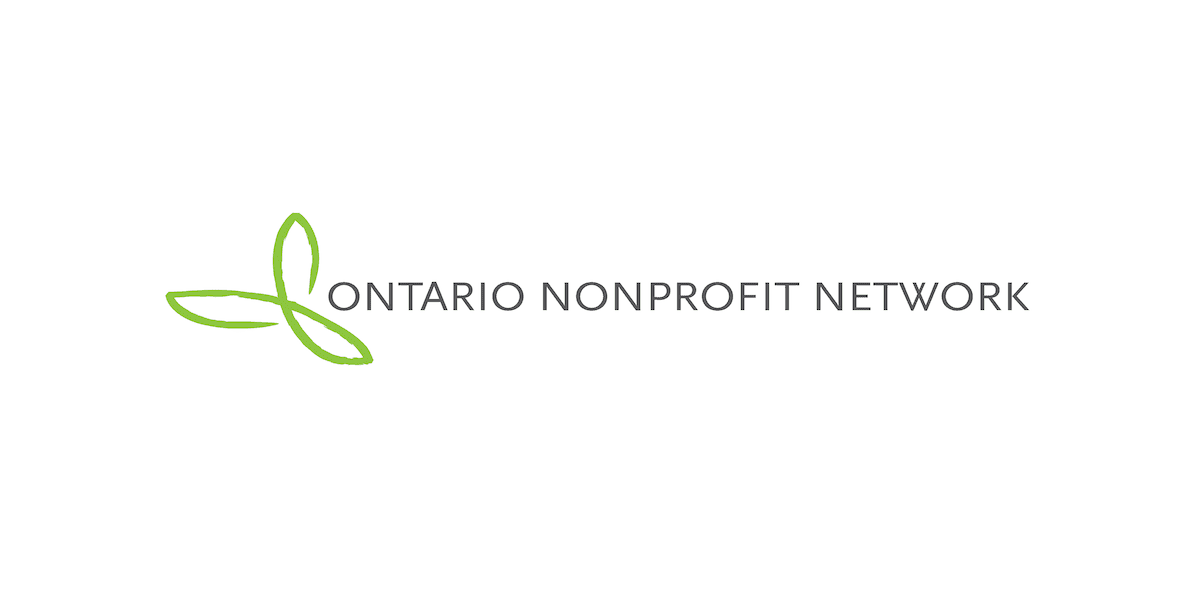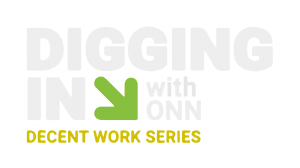
Blog
Five ways for nonprofits to engage this election
“We need to be the water. If there’s a barrier, we find our way over it, under it, through the little cracks – we find a way to move it forward.” -Pam Frache, Workers’ Action Centre
I first heard these powerful words from Pam during ONN’s webinar on engaging communities in election advocacy. Nonprofits have been moving like water these past two years; time and again, organizations have pushed through challenges and pivoted in order to continue to feed, shelter, heal, and nurture communities. Organizations also used their collective voice to advocate for their communities and the nonprofit sector. From pandemic pay for frontline workers, liability protection to continue services, to the new federal-provincial child care agreement, our efforts have led to policy changes that benefit communities. Throughout the pandemic, we have found ways to move our missions forward through obstacles.
Now it’s time to focus our sights on the Ontario election on June 2. This election is a critical moment in time. We are emerging from a two-year global pandemic, facing historic levels of costs of living, and potentially heading into an economic recession. The pandemic has revealed how deeply inequities are entrenched in our current economic and social systems. As nonprofits, we need to continue engaging in advocacy this election to make sure the next government has a vision and a plan to create an equitable post-pandemic Ontario.
Here are five ways organizations can use this election to benefit communities.
1. Share resources and amplify community voices
A simple way to start engaging in election advocacy is to share resources created by other organizations with your network and amplify the voices of knowledge holders in your community. There might be community organizing efforts already successfully underway. Instead of reinventing the wheels, think about ways to amplify these existing initiatives and provide a platform for them to reach a bigger audience.
This could look like:
- Sharing the election priorities of nonprofits that align with your missions on your communication channels (newsletter, social media, etc.).
- Sharing posts and content from other organizations or individuals that talk about the same issues.
- Reaching out to folks from other organizations or individuals in the communities you serve and inviting them to share their expertise and strategies with your organization and network – this can be in the form of a presentation, a workshop, or a community meeting.
ONN recently added a new section in our newsletter dedicated to sharing election-related news, resources, and inspiring examples of what organizations are doing across Ontario.
Resources to get started:
2. Raise awareness about your issue
What is the issue you are working on? What are the solutions you want to share? Why should they matter to the public and candidates? Raising awareness about your issues is a great way to demonstrate to the public and candidates that these issues matter. It also shows that you have community-based knowledge and solutions. Write blog posts or op-eds, or share video stories highlighting key issues for your organization that you want the public to know. There is power in your story! These efforts may not seem explicitly linked to the election, but will raise the profile of your issues and get the attention of parties and candidates.
ONN uses many communication tools to build awareness of sector-wide issues, such as blog posts, op-eds, and social media campaigns.
Resources to get started:
3. Build the long game: Reach out to candidates and political parties
Meeting with candidates and political parties is a great way to inform candidates about the work your nonprofit is doing and bring community issues to their attention. During your meeting, you could share with them a recent report, research, or data points that capture key focus for your organization and community. Candidates want to meet as many constituents as they can to demonstrate they know their communities well, and are the best option come polling day. It’s also about the long game: use this opportunity to begin building relationships with candidates to become champions for community issues. A current candidate might become a cabinet minister down the road, making key policy decisions that directly impact the work you do.
Tip: Make sure to reach out to all political parties and candidates in your riding to cover the spectrum of policy influencers and to remain nonpartisan.
Engaging with candidates and political parties can involve:
- Writing to candidates to ask for a meeting
- Inviting them to your events
- Attending an event where candidates are speaking
- Engaging with them on social media. For instance, many candidates have Twitter accounts – connecting with them on Twitter is a creative way to get their attention while also being noticed by a wider audience.
ONN is currently reaching out to all provincial parties. We will present to them strategic issues faced by the sector – and propose solutions – to get commitments for a thriving nonprofit sector in their election platforms. Currently, we are working on building champions for the nonprofit sector at Queen’s Park by meeting with current MPPs in various ridings.
Resources to get started:
- How to find candidates in your riding
- ONN’s Tips for reaching out to candidates
- Reimagining Activism
- The Ultimate Social Media Guide for Nonprofits
4. Share what candidates and parties are saying
There is a lot of information being released by candidates and parties leading up to the election. Where does each party stand on the issues impacting the communities you serve? What are they missing? Election engagement is a two-way street so listening to these priorities and analyzing their relevance provides an important service to the people and groups you serve by helping them better understand the election focus now and post-election. To ensure nonpartisanship, don’t focus only on one candidate or political party.
Create a web page where all the relevant information can be found in one place to make it easier for communities to access the information. Be creative! You can create tables and infographics to compare different party priorities.
Check out the examples below for some inspiration before doing your own party platform analysis!
- CBC – How do the main parties compare on these issues?
- ONN Summary of Party Positions – Ontario 2018 Election
Resources to get started:
- The Ontario Liberal Plan for Economic Dignity
- Building a more caring Ontario – Ontario Green’s Mental Health Plan
- NDP promises $1.15B mental health program if it wins Ontario election
5. Support your communities to get out and vote
Consider ways to help the communities you serve effectively engage in our democracy. Many communities still face barriers to voting in Canada, including Black, Indigenous, racialized, newcomer, and low-income communities, as well as people with disabilities and people experiencing homelessness. It is crucial that their voices, which have been historically silenced, be heard during elections.
Ways nonprofits can provide support include:
- Informing clients and program participants about the election and reminding them to vote! Demystifying the voting process.
- Helping them register to vote if needed.
- Providing free transportation to program participants to polling stations.
Remember, nonpartisanship is key! Don’t focus only on one candidate or political party. It’s not about who people vote for, but that people are empowered to use their right to vote as one way to voice their opinion on policies and issues that matter to them.
Resources to get started:
Don’t hesitate, advocate!
In my recent conversations with nonprofits about the upcoming election, two emotions came up repeatedly: hesitancy and anxiety. I want to acknowledge these emotions we are feeling. Nonprofits have been at the front line working with communities and meeting crises at every turn. In addition, the HR crisis is limiting organizations’ capacities to take on more work. It can be overwhelming when it feels like there’s so much change that needs to happen, and so little time in between all the other work we do. The seemingly burdensome and complex election rules don’t help either.
Even during challenging times, there are still moments and spaces for us to make our voices heard. We encourage every organization to find their role to engage in the upcoming election.
Whether you are reaching out to candidates, running advocacy campaigns, helping voters get out to the polling stations, or educating the public on issues your communities are facing, you are taking actions, you are sowing seeds. Trust that the seeds you sow will blossom.
ONN will continue to share election advocacy resources with the nonprofit sector as more information is released, including our analysis of all political parties’ election platforms.
Written by Candice Zhang, Policy Advisor at ONN.






